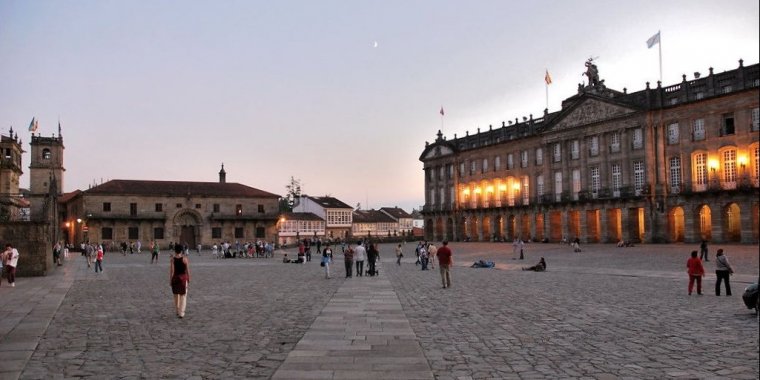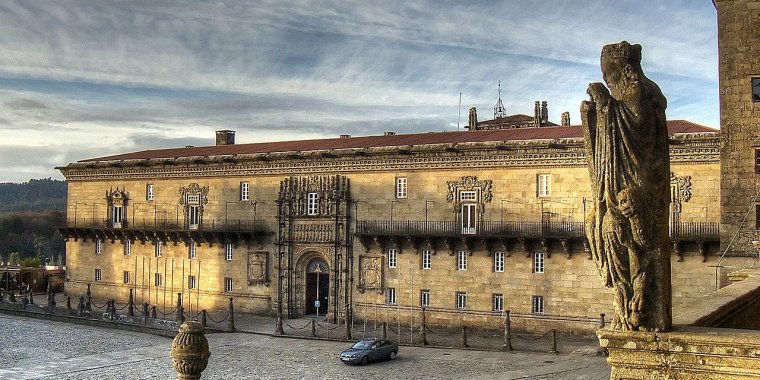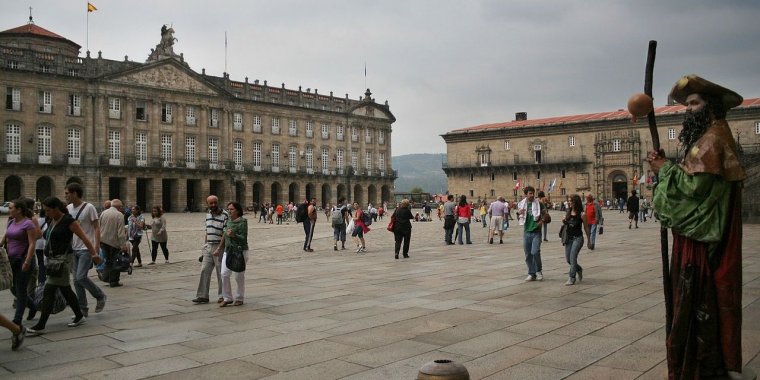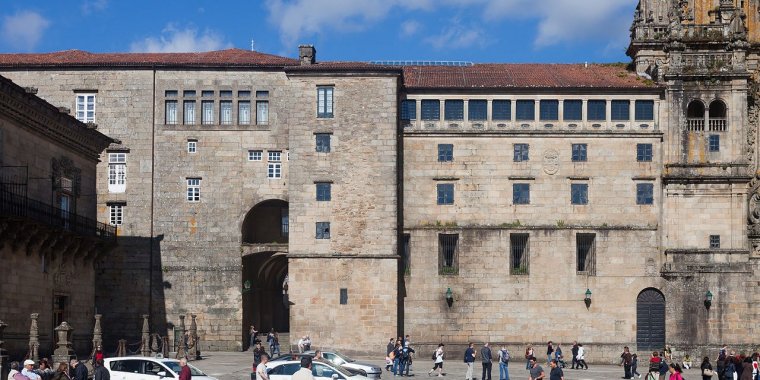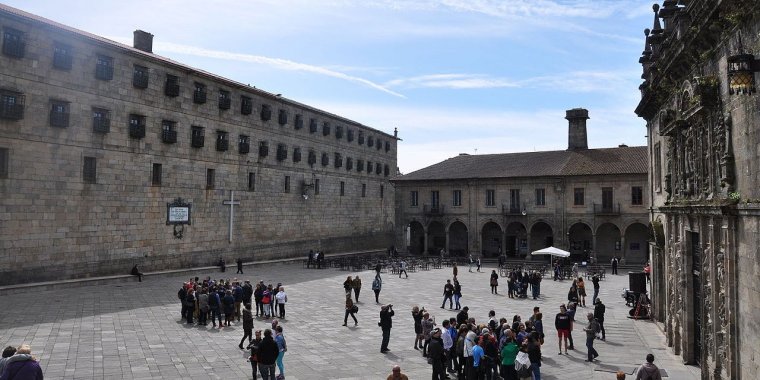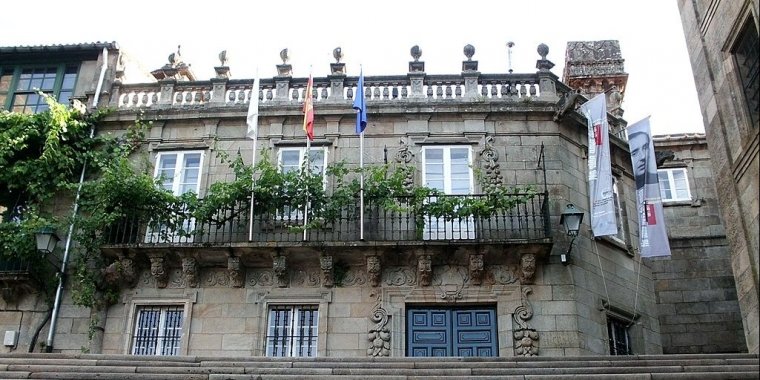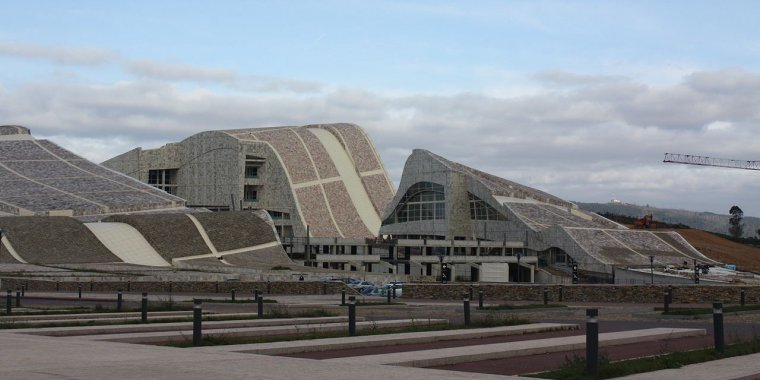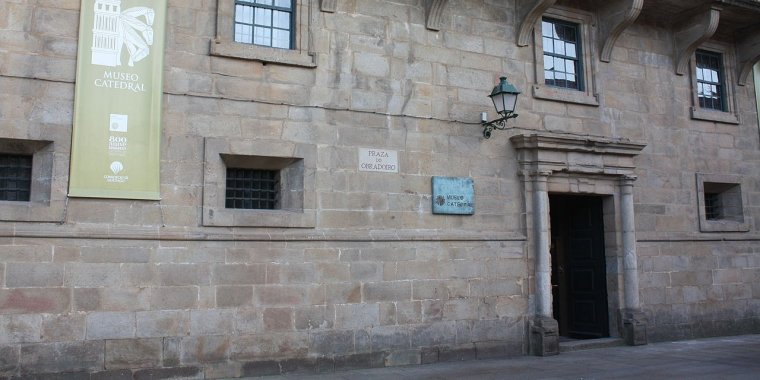| Published in Attractions / Places of Interest |
Tourist Attractions in Santiago de Compostela, Spain
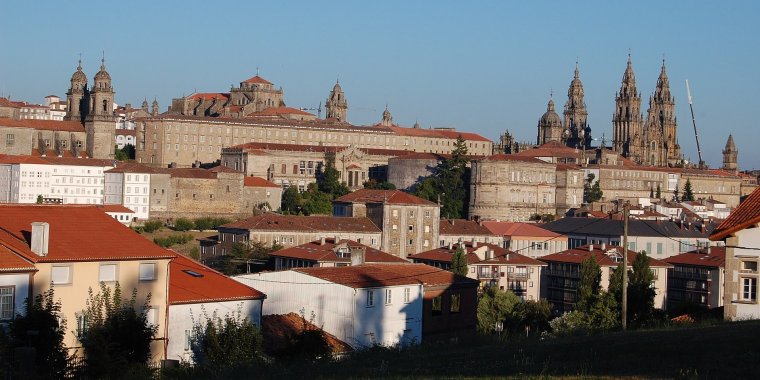
Santiago de Compostela, Spain. ![]()
The city has its origin in the shrine of Saint James the Great, now the Cathedral of Santiago de Compostela, as the destination of the Way of St. James, a leading Catholic pilgrimage route since the 9th century.
Sites
• Praza do Obradoiro. In the heart of the city, it's named after the workshop of the stonemasons that was established during the construction of the Cathedral (Obradoiro is the Galician word for workshop). This is the arrival point of thousands of pilgrims every day and kilometer 0 of the Way of St. James is in the center of this square.
The surrounding buildings are examples of different architectural styles. At the east, the baroque front of the cathedral with the museum at its right and the Gelmírez Palace at its left. At the West, the Rajoy Palace, which serves as the current city hall. At the north, the Catholic Kings Hostal, a plateresque building destined to host the pilgrims. At the south, the San Jerónimo College, an old students residence and now the head office of the University of Santiago de Compostela.
• Catedral de Santiago de Compostela (Cathedral of Santiago de Compostela), Praza do Obradoiro. 07:00-20:30 every day. This cathedral has so many examples of different architectural styles that covering them all would be beyond the scope of this article. Maybe the most important are the Baroque front of the Praza do Obradoiro and the interior porch, Pórtico da Gloria.
The tomb of Santiago (Saint James) is under the Cathedral, and it is possible to visit its tomb and even hug the sculpture that represents the saint. On regular occasions the church shows its "Botafumeiro", a huge solid silver incense burner which is swung from the ceiling of the church by a team of energetic men ("tiraboleiros") hauling it on ropes.
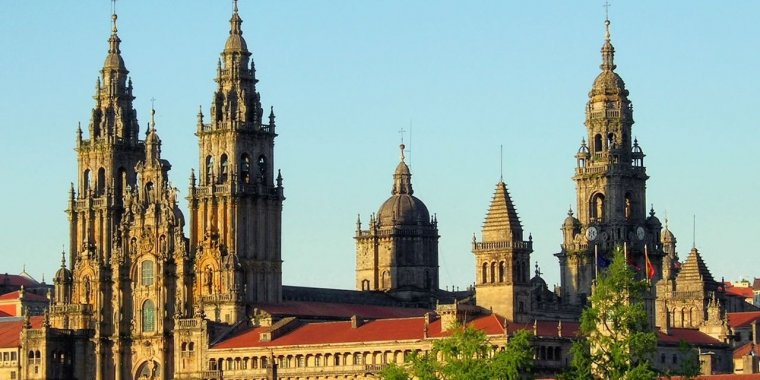
Catedral de Santiago de Compostela. ![]()
• Hostal dos Reis Católicos (Catholic Kings Hostal). The hostal was built as a hospital after the visit of the Catholic Kings to Santiago in 1486, to attend the pilgrims. With the years, the Catholic Kings ordered the building of a big hostel with the money they had earned with the conquest of Granada. Its style is Plateresque. At its front, two coats of arms of Castilla can be seen.
• Palacio de Raxoi (Rajoy palace). An 18th-century building, it was built under the classic canons to host the city council, a jail, a seminary and the residence for the children of the choir. At the top, there's a sculpture of St. James riding his horse and fighting with the Arabs.
• Colexio de San Xerome (San Jerónimo College). It was founded by the archbishop Alonso III de Fonseca to host poor students. Its front has a Romanesque style.
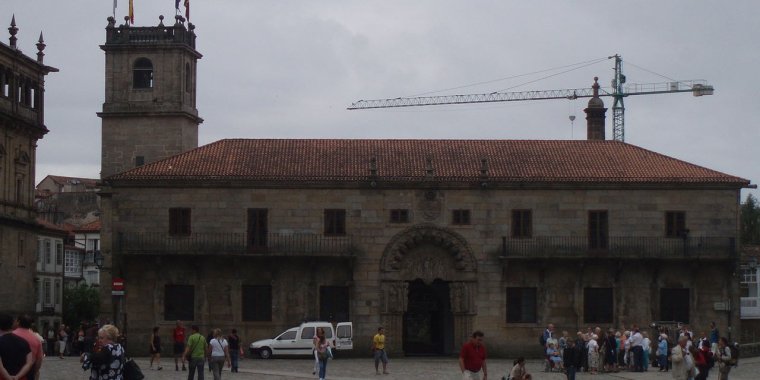
San Jerónimo College, at Obradoiro Place of Santiago of Compostela. ![]()
• Palacio de Xelmírez (Gelmírez Palace). Built in the 12th and 13th centuries, it's now the home of the archbishop of Santiago. It's a great example of the Romanesque civil architecture.
• Plaza da Quintana (Quintana Square). This is the square at the other side of the cathedral. It's divided in two, Quintana dos Mortos, just until the staircase and Quintana dos Vivos, the upper side. In the past it served as cemetery and market. There's a legend that if you're at this square alone at midnight, you will be able to see all the dead buried there.
• Praza de Praterías (Silversmith's Square). Close to the Quintana, it has a well-known fountain and it offers one of the best sights of the cathedral.
• Monasterio de San Martiño Pinario (San Martín Pinario Monastery). Benedictine monastery of the 9th century. The building is baroque. It's one of the most emblematic buildings of all the city. It's in the Praza da Inmaculada.
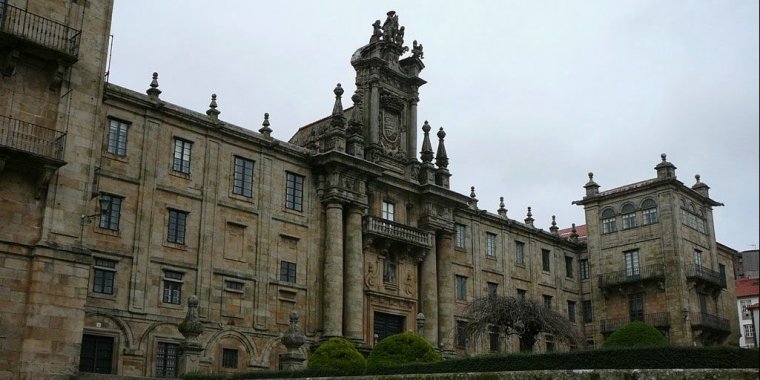
Monasterio de San Martiño Pinario. ![]()
• Casa da Parra (Parra House). At the Quintana dos Vivos, this building has the typical chimney of the 18th century.
• Praza de Abastos (City Market). The second most visited monument. This market is the typical Galician market and one of the biggest all over Spain. It's the perfect place to buy some fresh seafood, vegetables and meat.
• Cidade da Cultura (City of Culture) (Buses run every hour (line 9) from the centre of the city). Peter Eisenman's ambitious project in the outskirts of Santiago, impressive especially for those interested in architecture. It consists of a museum, a library, cafeteria and archives, which are all open and functioning at present. Guided tours are available for free.
Museums
The city has several museums that are worth the visit. Some of them are:
• Cathedral Museum, Praza do Obradoiro.. Daily except Christmas Day, New Year's Day, January 6, St. James' Day (July 25) and August 15. It shows the Cathedral’s history and artistic testimonies, from the first basilicas and archaeological remains, the Romanesque period, the work of Master Mateo, with the reconstruction of the Cathedral’s Stone Choir; sculpture in the Cathedral between the 13th and 18th centuries, a tour of the Mannerist Cloister, Library, where the Botafumeiro censer is exhibited and the Chapterhouse, ending on the top floor with an important tapestry collection, which includes a room dedicated to Goya, and the spectacular continuous balcony that dominates Plaza del Obradoiro and the streets of historical Santiago. €3-5.
• Museum of the Galician People. Closed Monday. The former Convent of Santo Domingo de Bonaval on a hill outside the walls of the historical city, beside the road used by pilgrims to enter Compostela, now houses the Museo do Pobo Galego (Museum of the Galician People), which, provides a general view of the most representative expressions of Galicia’s own culture. It displays different aspects of coastal life, traditional trades, the country, traditional costumes and architecture.
It also includes sections of Galician archaeology, painting and sculpture. Different temporary exhibitions are regularly organized on a variety of subjects. It's where many important Galician figures are buried. Rúa de San Domingos de Bonaval. €3 (free on Sundays).
• Galician Centre of Contemporary Art (CGAC), Rúa Ramón María del Valle-Inclán (In the Old Town). Closed Monday. The building was designed by Portuguese architect Álvaro Siza and finds a careful balance between the outer and innerspace. Free.
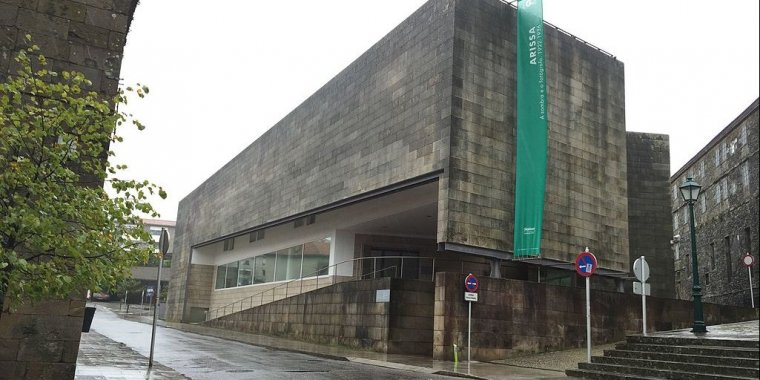
Galician Centre of Contemporary Art. ![]()
• Pilgrimage Museum, Rúa de San Miguel. The exhibition highlights the importance, for European culture and Hispanic America, of the pilgrimage and worship of St. James. €2.40 adult, €1.20 student, free for under 18 and 65 and over. (Wikivoyage)
See also Santiago de Compostela in Pictures.
YOU MAY ALSO LIKE




 If you own or manage a travel-related business such as a hotel, a bed-and-breakfast, a restaurant, a pub or a cafeteria, you can create a web page for your business for free on Titi Tudorancea Travel Info. » |
